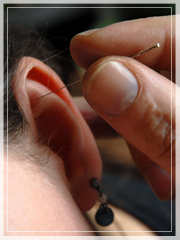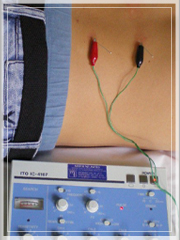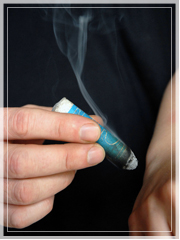| |
| |
| |
 |
|
Acupuncture
Acupuncture involves the insertion of very fine, sterile, disposable stainless steel needles into specific points on the body known as acupuncture points. The acupuncture points are located on meridians, where Qi, or vital energy, flows through to provide the body with strength and nourishment.
Among over 400 acupuncture points, different acupuncture points are chosen in accordance with patient's individual constitution and presenting signs and symptoms.
|
| |
| |
 |
|
Ear Acupuncture
Ear acupuncture is based on the idea that the ear is a microsystem with the entire body represented on the outer portion of the ear. Ailments of the entire body are assumed to be treatable by stimulation of the surface of the ear exclusively.
Ear acupuncture may be used in conjunction with body acupuncture or as primary mode of treatment. As a primary therapy, studies have proved that auricular acupuncture is very useful in treating behavioral health, including addictions, mental health, andemotional trauma.
For more information, click here or visit National Acupuncture Detoxification Association (NADA).
|
| |
| |
 |
|
Electro Acupuncture
Electro acupuncture is a form of acupuncture in which pairs of acupuncture needles are attached to a device that generates continuous electric pulses between them.
Electro stimulation enhances the effect of the acupuncture needles and can be used to either stimulate or sedate. Different frequencies produce different physiological responses in the body. Electro acupuncture is particularly good for treating muscular pain.
|
| |
| |
 |
|
Cupping
Cupping is one of the oldest Traditional Chinese Medicine (TCM) treatment modality involves the use of glass or plastic cups to create a vacuum seal on the skin. This technique is used to increase circulation to the underlying tissues, disperse swellings, release muscle tension, reduce fever and activate the lymphatic system.
Cupping can often leave bruise-like marks that may last for a few days after the treatment.
|
| |
| |
 |
|
Gua Sha
Gua Sha is an East Asian healing technique that involves scraping (gua) across the skin with an instrument in order to bring up raised, red marks (sha).
Gua Sha improves Qi and blood circulation, opens the skin pores to release the exterior mimicking sweating, and moves fluids containing metabolic waste that has been congested the surface tissues and muscles. Therefore, Gua Sha is often used for pain, aching, tenderness and/or tightness of the muscles associated with acute or chronic disorders. Gua Sha is also used to treat and prevent the common cold, flu, bronchitis, and asthma.
The area is stroked until Sha is completely raised. The color of Sha has both diagnostic and prognostic value. The darker Sha, the deeper and older blood stasis: the skin will only turn pink and Sha will not be formed if there is no blood stasis; if the blood stasis is recent and superficial, Sha is fresh red; if the blood stasis is deeper and long-standing, the color of Sha will be dark red, purple, or even black. The discoloration of the skin from Sha should fade in a few days (2-4 days).
|
| |
| |
 |
|
Moxibustion (Moxa)
Moxibustion is the ancient method of burning moxa, a dried herb derived from mugwort leaves, on or near the skin to facilitate healing. When the moxa is burned directly on the skin, it is considered direct moxa. This technique is used less frequently because of the risk of burning the skin. Indirect moxa consists of lighting a cigar-like moxa stick and then holding it near the skin, often near the acupuncture needles.
Moxibustion is effective at increasing blood flow to areas of injury and warm areas where cold accumulates. This treatment may be used as an adjunct to acupuncture treatment when appropriate, and is used to treat a variety of ailments, including muscle aches and pains as well as menstrual cramps.
|
| |
| |
 |
|
Chinese Herbal Medicine
In China, herbal medicine is considered as the primary therapeutic modality of internal medicine.Over 3000 years, Chinese physicians have systematically observed and classified more than 5000 plant, animal and mineral substances according the medicinal effect. Rather than being prescribed individually, single herbs are combined into formulas that are designed to adapt to the specific needs of individual patients.
Chinese herbal medicine is often used as an important adjunct to acupuncture treatment. Herbs greatly enhance the effect of acupuncture by redistributing substances within the body and adding essential substances to the body. As dietary supplements, Chinese herbs can boost internal deficiencies as well as eliminate harmful substances that accumulate pathologically.
Although Chinese herbal formulas were traditionally decocted in a pot and consumed as a tea, they can also be dispensed as granules, pills, tinctures, wines, and topical creams, pastes, and plasters. At BR Acupuncture Wellness Center, we use the highest quality herbs which have passed rigorous tests and comply with United States FDA GMP (Good Manufacturing Process)safety guidelines.
|
|
|

